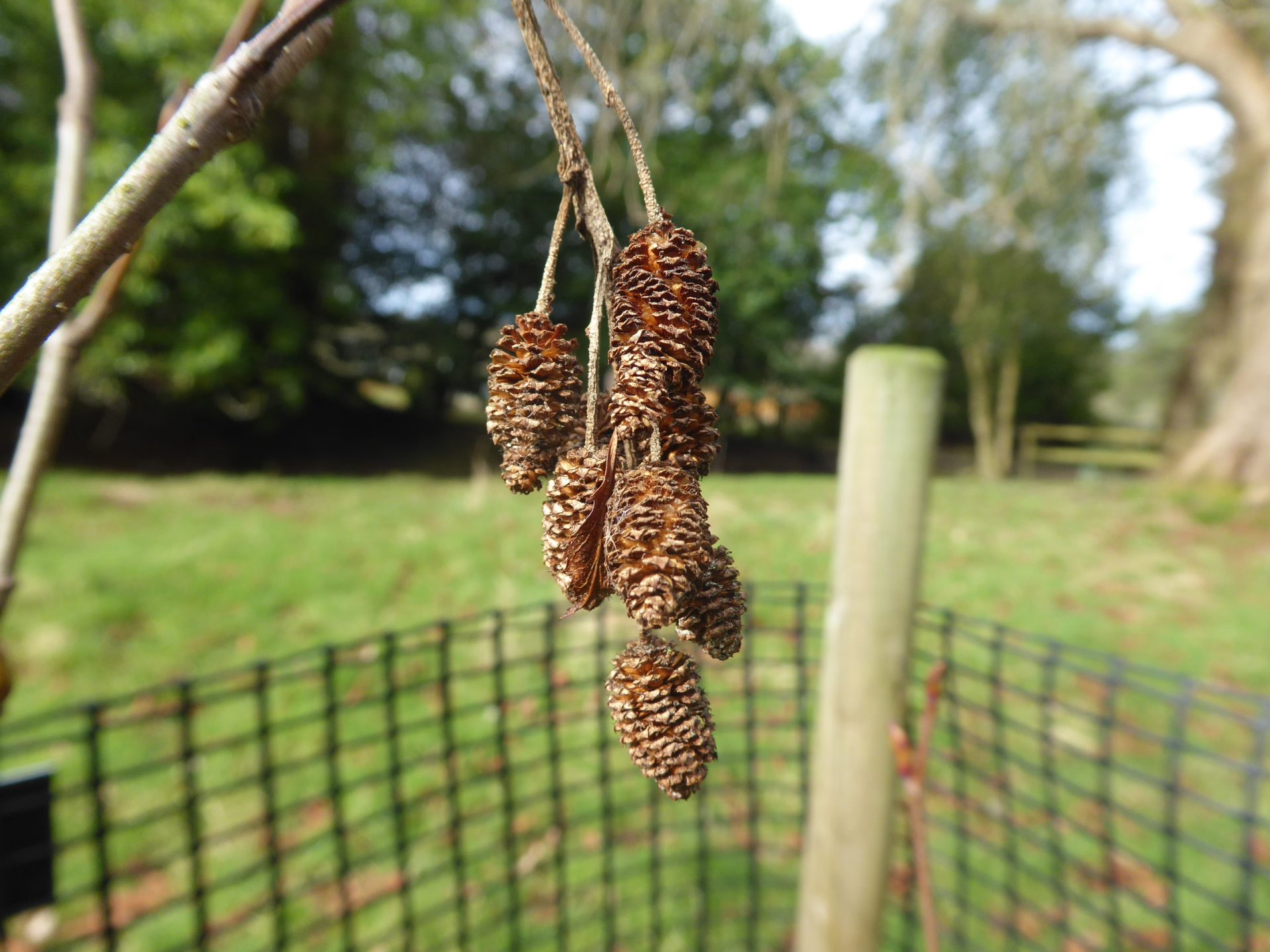Green alder (VAR)
Green alder is a deciduous shrub or small tree that is widely distributed across the northern temperate forests from north-west America to Japan through Central Europe. There are several recognised sub-species occurring across the range that are geographically distinct. The European species of green alder is Alnus viridis ssp. viridis.
It is a light-demanding, fast-growing shrub that grows well on poorer soils. The species is well known for soil enrichment through atmospheric nitrogen fixation, soil stabilisation by forming a highly fibrous system, and for producing abundant leaf litter. The species has been a frequent component in land restoration projects.
It has a potential role in upland forests where it will not compete with trees being grown for timber. However, it is unclear whether this role will increase with climate warming.
Green alder is categorised as a Plot-stage species. These are a group of species that have demonstrated some positive silvicultural characteristics at the Specimen-stage and are now subject to further testing and development in a limited number of trial plots.




Range
Green alder in Europe is native to the Alps and mountains of south-east Europe with an altitudinal range between 1600 m and 2300 m occasionally higher (to 2500 m) if conditions suit.
Provenance Choice
Limited trials have been undertaken in Britain, mainly on reclamation sites; there is no British information on provenance variation.
Site Requirements
Green alder is a large shrub or bushy tree which colonises mountain areas after disturbance, a true pioneer species. Best growth is found on freely draining moderately dry to fresh soils of poor to medium nutrient regime. It is not tolerant of drought, is not suited to very wet or alkaline soils, and has limited tolerance of exposure. It is cold hardy in Britain and frost tolerant.
Further detail on the site requirements of green alder in current and future climates can be examined using the Forest Research Ecological Site Classification Decision Support System (ESC).
ECOLOGICAL SITE CLASSIFICATION TOOL
Silviculture
Green alder is a light demanding pioneer species of alluvial soils, screes, and disturbed ground. It is cold hardy in Britain and has often been grown either as a nurse – due to its ability to fix nitrogen – with conifers or hardwoods. As a nurse it should be established before the main species and has shown good results when mixed with ash, oak, sycamore, or beech.
Green alder might find a role as a soil improving or diversification species within upland conifer forests on certain site types. Green alder can regenerate freely if conditions suit, and this could be a problem if regeneration is not required. Green alder has been recognised as a potential invasive in several countries, so caution should be used in Britain near to native woodland sites.
Green alder can be used for soil enrichment, for slope and stream bank stabilisation and more generally to prevent erosion on disturbed, nutrient poor soils.
Pests and Pathogens
No specific information is known about the species’ susceptibility to pathogens, but this is likely to be similar to that of Italian alder.
See our other tools and resources
Further Resources
Internal
External
In addition to the general sources of information for species the following are useful for green alder.
Matthews, J. D. (1963) The silviculture of alders in Great Britain. Oxford Forestry Institute Occasional Papers 34: 29-38.
Mauri, A., Caudullo, G., 2016. Alnus viridis in Europe: distribution, habitat, usage, and threats. In: San-Miguel-Ayanz, J., de Rigo, D., Caudullo, G., Houston Durrant, T., Mauri, A. (Eds.), European Atlas of Forest Tree Species. Publ. Off. EU, Luxembourg, pp. e01f0e4+
Wilson, S. McG., Mason, W.L., Savill, P., and Jinks, R. (2018) Non-native alder species (Alnus spp.) Quarterly Journal of Forestry, 112 (3), 163-174.
White, J. and Gibbs, J.N. (2000) The value of alders to Britain. Quarterly Journal of Forestry. 94 (1), 23-28




